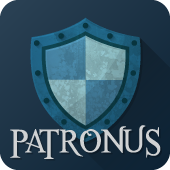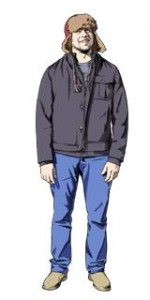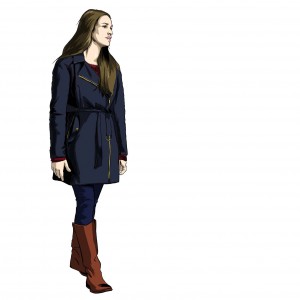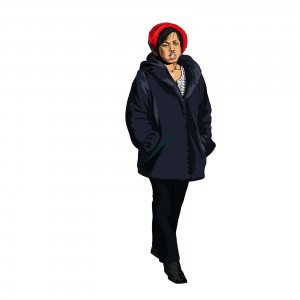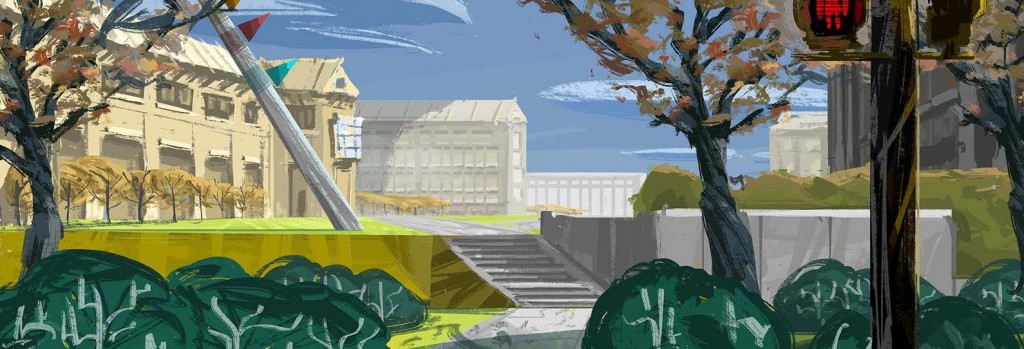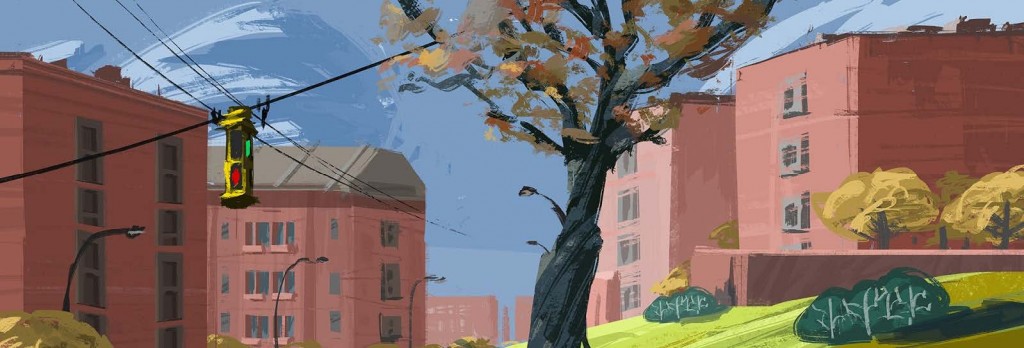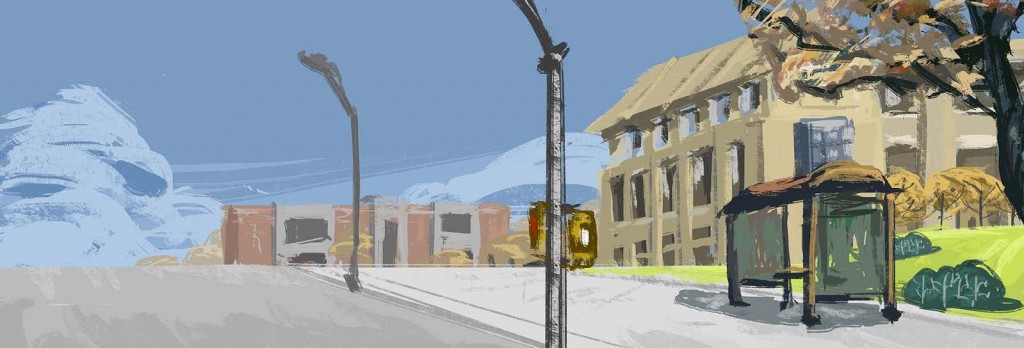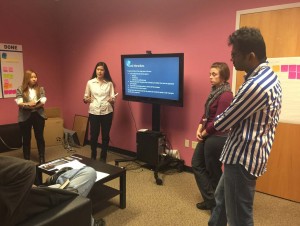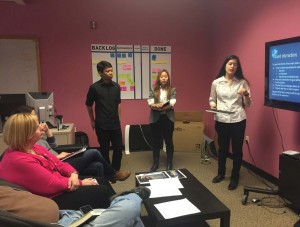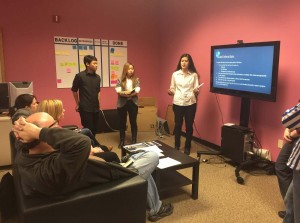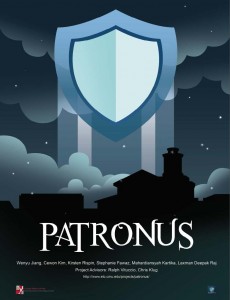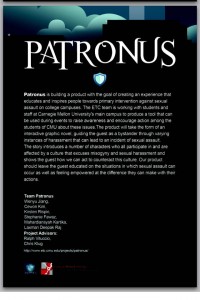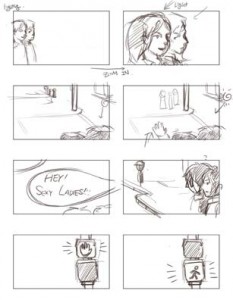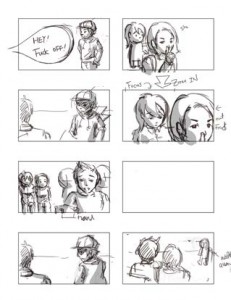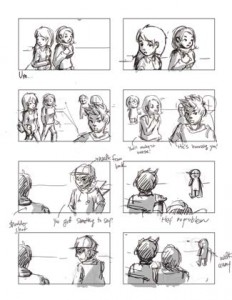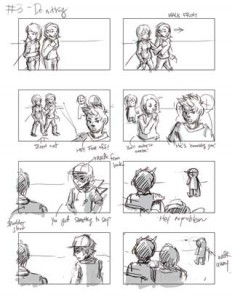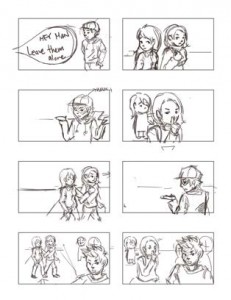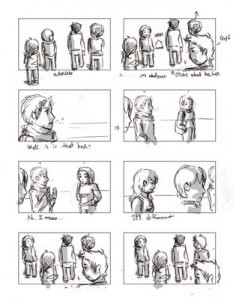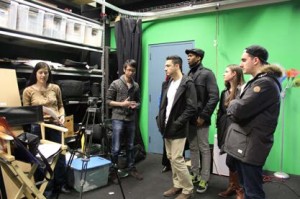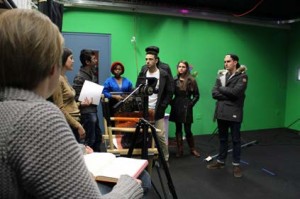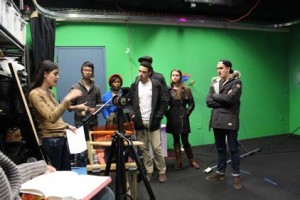Week 6:
This week, Stephanie and Kirsten completed the first iteration of the scripts for all four incidents. Upon completion, we sent them to design consultant Whitney Beltran and drama student Talia Levin for feedback in terms of conciseness in dialogue, scenario believability, character cohesiveness, and satisfactory choices offered. Meanwhile, the main campus group conducted initial playtests with the overall stories and general incident outlines. They compiled results from male and female playtesters, noting their reactions and feedback towards the scenarios, the characters, and the available choices. These results have been very helpful in informing us for editing and tweaking our scripts and storyboards. In this vein, Stephanie and Wenyu sat down and completed the storyboard for the last incident at the party, which has now been placed on the shared Box folder for the main campus team to use in their playtests.
The team decided to push back the photoshoot with the drama students until Sunday March 1st in order to allow the main campus groups more time to playtest the storyboards and collect feedback. While we all agree to be flexible on dialogue, the artists prefer the shots to be as concrete as possible before the photoshoot. In the meantime, Wenyu is continuing to storyboard the rest of the incidents while Cewon has finished various shots for the first incident as well as organized the shot lists for easier retrievability.
On Wednesday, each team member met with Chris and Ralph individually to discuss their process grades. We each discussed our progress in the project and how we have been working with each other. In the afternoon, we held a full team meeting to discuss how panel transitions will look and work in the application. Wenyu and Cewon discussed their artistic vision for the transitions, and Mahar and Ladera discussed how they could most easily implement them. We brought our ideas to the main campus group so that they could help visualize the transitions for the programmers.
On Friday morning, Sabrina Haskell-Culyba from Schell games came to talk to the team about the project she headed, PlayForward. She gave us valuable insight on player decision making, creating tough situations and creating player investment in the non-playable characters and the game in general. She also expressed interest in playtesting our product later on in the semester. Mahar also created the first iteration of the intervention choice implementation, giving a 3-choice panel structure that the player can click on, expanding the chosen panel into the rest of
the screen. Ladera looked into converting the current images into vector images for zoom in ability within a panel. Unfortunately, the created vector image had colors bleeding on the character face, with seams appearing on the clothing. We will continue the project using pixel images.
Next Week:
By Tuesday next week, we plan on having all of the storyboards completed for playtesting so that we are ready for our photoshoot next Sunday. We also hope to see the animated panel transitions from the main campus group by Tuesday as well. Hopefully we will be able to get script feedback this weekend or early next week so that we can edit and revise the scripts for continued playtesting.
We are still waiting on hosting information in order to proceed with backend analytics which will also hopefully be solved early next week so that we start looking into the programmatic requirements to achieve data gathering.
